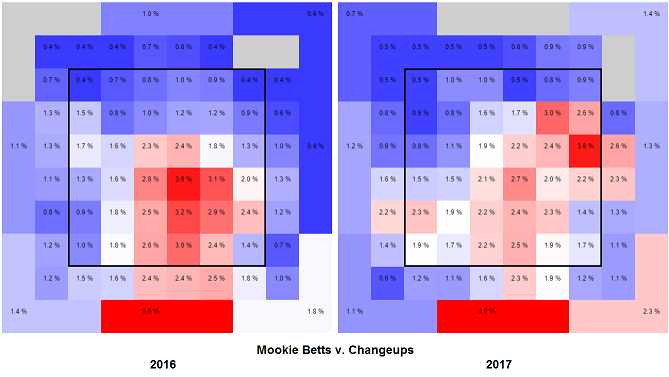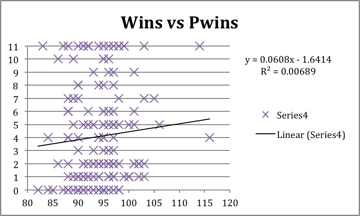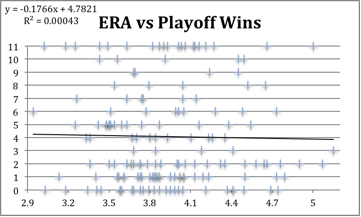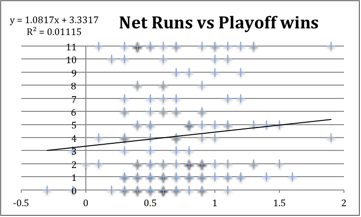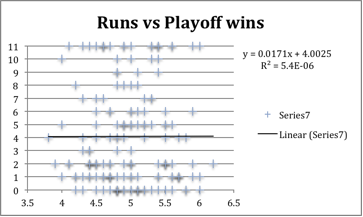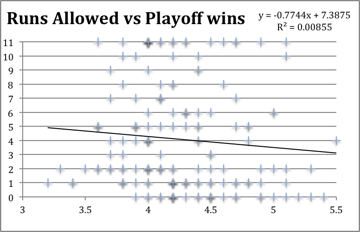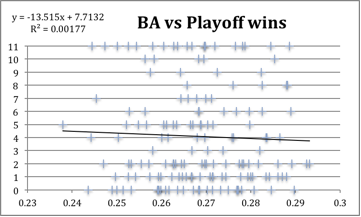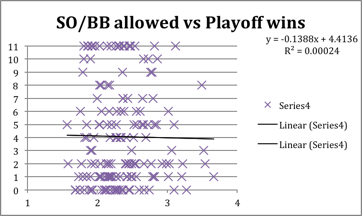The MLB playoffs had not changed its format for the past 13 years. This season, however, we will see a “minor” change taking place during the World Series. The home-field advantage will belong to the team with the best regular-season record, thus ending the already established tradition of it pertaining to the league that won the All-Star Game in July. As this is not a mind-blowing change, I’m here to propose something much more interesting that will probably never happen, but still.
What if after each round of the postseason, from the wild-card games to the league championships, the players of each losing team entered a pool from which the winning teams could draft some of them for the next round of the playoffs?
First of all, we must recognise that we hate when a player gets injured and misses playing time. Were it in our hands, we’d put our favourite players on the field for the 162 games, make them bat first, get as many plate appearances as possible, and see their numbers grow during the summer and into the autumn with pleasure. Even more, how frustrating it is when one of our favourite players, or just one of the best players of the game (hello, Mike Trout!) is stuck on a franchise that never ever makes it to the postseason, or that every time it does it seems to not be able to advance past the first round?
On top of this, there is the seeding and the way we watch underdogs trying to beat the odds and outplay the best teams of the regular season on a yearly basis, which in all honestly is nothing crazy given how much of a lottery the game becomes once we reach October. Wouldn’t it be great to do something to even the field a little and make the “bad” teams get more on par with the “good” teams during the playoffs?
Enter the Losers-Turned-Into-Winners Draft! Let’s explain the basics and then run some historical simulations based on them.
The idea behind this system is pretty simple. As things are nowadays, the best team from each division of the American and National Leagues automatically makes the playoffs, followed by two wild-card teams that can come from any of the divisions and are determined by their record during the regular season. We can therefore assume that the two wild-card teams from each league, which have a round of the postseason exclusively dedicated to them, are the two worst teams from each side of the bracket. Once a winner is named, that team advances to the Divisional Series and faces the best-seeded divisional champion. Seeds number two and three also go against each other, and after that the Championship Series of each league comes to fruition to determine who will face who in the World Series.
What I propose is to take advantage of the seeds assigned to each team at the start of the postseason, and play a two-round draft after each round of the playoffs is finalised, with the picking order going from worst-to-best remaining seeds. Each team would be able to pick two players, no restrictions applied to their position (so they can pick two batters, two pitchers, or a combination of both), and players from all losing teams would be available at the draft for any team, no matter the league they play for. Once a draft is completed, the players left unselected are removed from the pool, so players not selected during the draft held after the wild-card round are no longer available for the draft held after the Divisional Series, and so on.
This system would solve some of the problems fans need to deal with during each season, and most of all would make the playoffs as exciting and competitive as they could get. Every star player would get far more chances to win the World Series (who is going to pass on Kershaw if the Dodgers fall at any point?) during his career, players wouldn’t mind re-signing long-term deals with the franchises they’ve always played for as they would “only” need to reach the postseason in order to have a shot at the title from multiple angles and not only depending on the success of their team, low-seeded teams (supposedly worse than the rest of the field) would have influxes of talent as long as they progress as they would pick first in those drafts, and fans would have even more events to get excited about during an already exciting time. Don’t fool yourself, this is a win-win master plan!
Let’s take a look at how the 2016 MLB postseason could have changed had this draft-system being in place. To not make this too confusing, we will leave the results of each round as they were without taking into account the players taken by each team after each round’s draft. We would comment on how those picks could have affected the outcome of the playoffs, though.

The wild-card round made Toronto face Baltimore for a place in the AL Divisional Series against Texas. In the National League, San Francisco had to play against New York to stay alive. After those two games were played, the Blue Jays and the Giants made it to the second round. What would this have meant in our loser-draft system? Given the regular-season results, San Francisco (.537 W-L%) would have picked first and Toronto (.549 W-L%) second in a draft with a pool made out of the rosters of both the Mets and Orioles. Without much thinking applied to player valuations, these would have been the best-WAR players available per Baseball-Reference.com:
- Manny Machado, 3B (BAL): 6.7 WAR
- Noah Syndergaard, P (NYM): 5.3 WAR
- Zach Britton, P (BAL): 4.3 WAR
- Kevin Gausman, P (BAL): 4.2 WAR
- Chris Tillman, P (BAL): 4.1 WAR
- Jacob deGrom, P (NYM): 3.8 WAR
- Bartolo Colon, P (NYM): 3.4 WAR
- Chris Davis, 1B (BAL): 3.0 WAR
- Yoenis Céspedes, LF (NYM): 2.9 WAR
- Asdrúbal Cabrera, SS (NYM): 2.7 WAR
With a rotation already featuring Cueto, Bumgarner and Samardzija, among others, San Francisco could have added Manny Machado to replace Conor Gillaspie (1.1 WAR). Toronto may have followed that selection with that of Syndergaard (back up north!) in order to improve their rotation for the Divisional Series, and the last two picks could have gone either way with top-notch players on the board (San Francisco could have gone Yoenis’ way to move from Angel Pagan, and Toronto with Chris Davis to replace Justin Smoak at first). If that is not an improvement, you tell me what is.
Moving onto the Divisional Round, the Dodgers, Cubs, Indians and Blue Jays defeated the Nationals, Giants, Red Sox and Rangers, respectively. In this case, both Machado and Céspedes would become available again, and enter the draft pool for the remaining four teams. This again goes in favour of star players, as they would keep moving onto later rounds if they’re still good enough as to keep being selected round after round, and we all want to watch the best players competing for the highest stakes. These are the second round’s best available players, again per Baseball-Reference.com WAR (keep in mind all players from New York and Baltimore, barring those selected by San Francisco – now eliminated from contention – are no longer available):
- Mookie Betts, RF (BOS): 9.5 WAR
- Manny Machado, 3B (BAL/SFG): 6.7 WAR
- Adrian Beltre, 3B (TEX): 6.5 WAR
- Max Scherzer, P (WSN): 6.2 WAR
- Dustin Pedroia, 2B (BOS): 5.7 WAR
- Johnny Cueto, P (SFG): 5.6 WAR
- Tanner Roark, P (WSN): 5.5 WAR
- Jackie Bradley, CF (BOS): 5.3 WAR
- Rick Porcello, P (BOS): 5.1 WAR
- David Ortiz, 1B/DH (BOS): 5.1 WAR
- Madison Bumgarner, P (SFG): 5 WAR
- Cole Hamels, P (TEX): 5 WAR
- Buster Posey, C (SFG): 4.6 WAR
- Daniel Murphy, 2B (WSN): 4.6 WAR
- Brandon Crawford, SS (SFG): 4.5 WAR
By this point, and looking at the regular-season results, the seeding for the draft would make teams pick in the following order: Toronto (.549 W-L%), Los Angeles (.562), Cleveland (.584) and Chicago (.640). Judging by the wild-card draft picks already made by the Blue Jays and the rest of their roster, we may infer their first pick would be Mookie Betts to replace Michael Saunders in left field. Los Angeles would probably look to improve their offense with their first pick, which could have been Dustin Pedroia in order to remove Utley from the lineup. Cleveland, given their not-so-great pitching staff, would have selected Scherzer in a hurry, and Chicago may have closed the first round of selections with that of Buster Posey to get aging David Ross out from behind the plate.
With pretty much every roster spot already stacked for every team, the second round would become some sort of a best-available-pick affair. I’m betting on Toronto getting Manny Machado and finding a spot for him, taking advantage of the designated-hitter slot in the lineup. The Dodgers could improve their pitching rotation with the addition of Johnny Cueto. Cleveland’s outfield would welcome the addition of Jackie Bradley more than anything. And finally the Cubs would close this round by going the pitching route and picking Madison Bumgarner.
Without taking those additions into account and respecting what happened in real-world MLB, after the Divisional Round finished the two teams making the World Series for the 2016 season were the Chicago Cubs and the Cleveland Indians, which means every player from Toronto’s and Los Angeles’ rosters (including those being picked in the first two drafts) become available in the final postseason draft event. Let’s take a look at the best players on the board by their regular-season WAR:
- Mookie Betts, RF (BOS/TOR): 9.5 WAR
- Josh Donaldson, 3B (TOR): 7.5 WAR
- Manny Machado, 3B (BAL/SFG/TOR): 6.7 WAR
- Corey Seager, 3B (LAD): 6.1 WAR
- Dustin Pedroia, 2B (BOS/LAD): 5.7 WAR
- Johnny Cueto, P (SFG/LAD): 5.6 WAR
- Clayton Kershaw, P (LAD): 5.6 WAR
- Noah Syndergaard, P (NYM/TOR): 5.3 WAR
- Justin Turner, 3B (LAD): 5.1 WAR
- Aaron Sanchez, P (TOR): 4.9 WAR
- J.A. Happ, P (TOR): 4.5 WAR
- Edwin Encarnación, 1B/DH (TOR): 3.7 WAR
- Marco Estrada, P (TOR): 3.5 WAR
- Joc Pederson, CF (LAD): 3.4 WAR
- Kevin Pillar, CF (TOR): 3.4 WAR
As can be seen, five of the best 15 players available come from teams already out of contention, with Manny Machado being the only one having made it through the first two postseason drafts by going from Baltimore to San Francisco to Toronto, which proves his value among his peers. The Blue Jays, both from their original roster and their picks, provide nine of the 15 players, while the Dodgers only add four original men and two acquired through the draft.
In terms of what Chicago and Cleveland could do in order to create the best possible rosters with the World Series in mind, multiple approaches could be taken by them. Both teams made the finals without playing in the wild card, so they only have two draftees each between their players – not that they need much more. As Cleveland finished the season with a worse record, the Indians would pick first, and they’d probably take Clayton Kershaw because you just simply don’t pass on the best pitcher of his era. Chicago’s pitching is already stacked, so they would probably look at the outfield and bring Mookie Betts in. Jose Ramirez had a great season for Cleveland in 2016, and it would be hard for the Indians to leave Donaldson on the board, although they may look at the outfield options and pick someone like Pillar or Pederson to get Lonnie Chisenhall out of the lineup. Let’s go Joc Pederson here. Finally, Chicago would close the draft by taking Johnny Cueto, as they don’t even have holes to fill in their offense at this point.
And with this third and final couple of draft rounds, the postseason would end in a World Series win for the Cubs over the Indians in a series that would feature two incredibly great teams that through the course of the playoffs would have added the names of Betts, Scherzer, Cueto, Kershaw, Bradley, Bumgarner, Posey and Pederson to their rosters. Are you telling me those eight players wouldn’t make the final meetings of the season much more exciting than they could ever be? While I haven’t applied much thought to each selection and I’ve based them mostly on each player’s WAR or flagrant team needs, the process could turn into a really tough war between teams at the time of picking players not only for their benefit but also to block other franchises from taking them, and improving spots where they may lack a player of certain quality, be it in their hitting lineup or in their pitching rotation.
This winners-draft-losers type of draft will probably (definitely) never happen. There would be much trouble implementing it and a lot of collateral implications that make it impossible to be a real thing. But hey, at least we can dream of a parallel world where Mike Trout could reach the World Series each and every seas– oh, yes, I forgot he plays for the Angels…



